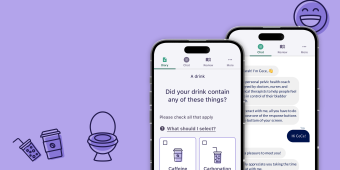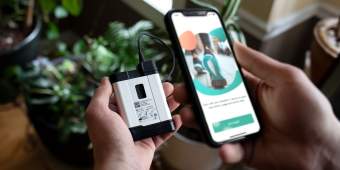COVID-19 showed patients the possibilities of telemedicine — 5G in healthcare will make them reality.
As the pandemic came crashing down around the world, healthcare delivery was forced to change overnight. Hospitals and doctor’s offices became potential exposure zones — not to mention overwhelmed with patients needing urgent care. Telemedicine — once shunned by healthcare payers and providers alike — became the primary option for any patients needing care unrelated to COVID-19.
At any other point in the last 20 years, it would have been much more difficult. Dial-up would have made scheduling appointments cumbersome. Previous generations of wireless networks and sporadic cellphone ownership among Americans would have made telemedicine largely inaccessible. Only now — as most Americans have reliable access to a device and internet — is telemedicine a viable alternative for in-person care.
And with 5G networks imminent, telemedicine is poised to go from a backup plan to our first choice in healthcare.
The healthcare opportunity of IoT and telemedicine
Today, you’re only a patient during what is hopefully a tiny fraction of your life — when you’re sick. Without illness, there is no care. Insurance won’t cover it and doctors aren’t equipped to provide it.
Telemedicine creates an opportunity to change that. With virtual care, regular check-ins are more accessible and affordable. Doctors can see patients not just when it’s urgent enough to force them into an office, but when they have questions or changes, or just need help staying well.
The Internet of Things (IoT) adds another layer — passive monitoring that can detect risk and personalize the virtual and physical care patients receive. Instead of filling out the same form in the same waiting room every time, patients will see doctors who are already up-to-date on their health, ideally more so than the patients themselves.
How will 5G affect healthcare? Constant, reliable data
To get to personalized medicine — maybe even predictive medicine — the data has to be 100% reliable. In healthcare, there is no “move fast and break things” when it comes to solutions. There are only people’s lives. And for doctors to fulfill their duty to protect those lives, they need to know they can trust the technology in healthcare.
In the past, and indeed right now, you couldn’t guarantee it. Sure, healthcare wearables could provide some data: Apple watches would occasionally catch an erratic heartbeat, step trackers would keep patients honest about their activity. But to depend on them for treatment? No. Providing personalized, predictive and real-time telemedicine requires a more reliable data network to support IoT, virtual reality (VR) and augmented reality (AR).
5G closes this data reliability gap where the benefits to healthcare can outweigh the risks of having technology replace human interaction. It does so by dramatically improving data reliability on three fronts: speed, latency and connectivity.
- Speed: 5G will advance mobility networks to gigabit speeds. But, it’s not just about how fast the data can move — it’s about how much of the data can move fast at the same time. As an example, 5G takes a three-lane highway and turns it into a 15-lane highway. With it, more data can move simultaneously at faster speeds from connected devices to the intended destination.
- Latency: A simple metric — how fast a signal can get to the tower and back — with monumental consequences. For VR and AR to reliably work, you need no lag at all. And for telemedicine to take on new dimensions, you need VR and AR. This, in theory, is something 5G can solve.
- Connectivity: If you’ve been in a stadium with full bars of signal strength, yet unable to use your phone, you’ve experienced the connectivity limitations of previous generations of wireless networks. Unfortunately, current architecture only allows for tens of thousands of connection points. But the good news is that 5G dramatically increases capacity to allow for millions of concurrent connections. That means smart phones, IoT devices and wearables can connect and communicate simultaneously.
Connectivity also extends to where data can make its way onto the network. 5G introduces an element of greater consistency with the addition of millimeter wave (mmWave) micro cell sites. These micro sites offer dramatic speed, latency and speed capabilities in locations beyond what the 4G and 5G macro cell sites and spectrum bands can deliver. This consistency improvement is fundamental in higher density areas (like large cities and stadiums), plus areas where macro site signals can be blocked by buildings, walls and terrain. Connectivity, speed and latency reliability will be realized with millimeter wave micro sites installed in dense cities or inside buildings.
Real-time, instantaneous data becomes possible with the speed, latency and connectivity benefits of fully deployed 5G. That means not just driverless cars and VR video games, but also remote surgery, virtual triage and the kind of consistent monitoring that finally makes a connected care model possible.
The always-connected model of 5G applications in healthcare
With a blanket of 5G connecting technology in healthcare from all points, hospitals and doctors’ offices are no longer the only point of care. Instead, the healthcare experience becomes centered on the patient — at home, at work, or wherever they happen to be.
Why healthcare innovation is as necessary for providers as patients
In the connected care model, people are patients before they get sick. Passive monitoring and trained algorithms watch for warning signs, so healthcare providers can call people in for healthcare, not sickcare. Wearables, apps and tech needed to make this happen have been in their nascent stages for years. They just need more advanced network connectivity to enable capabilities beyond what is currently possible.
5G is the last piece of the puzzle. Its reliability and speed will allow healthcare solutions to accelerate into new areas of innovation not possible with current 4G and WiFi connections. 5G capacity and latency will open up entirely new opportunities as more data can be transmitted ever-closer to real time.
The promise of 5G in healthcare
COVID-19 forced payers and providers alike to accept telemedicine for the public good. Now that the public knows how good that is, there will be no going back. The standard of virtual care is high enough now to be desirable, despite its hassles. If 5G can truly deliver on its potential, it will not only match in-person care, it will exceed and transform it.
The promise of predictive, personalized care is hard to overstate. The data that could be collected and transmitted via 5G networks as a matter of course would improve patient care and outcomes on an individual level, certainly. But in the aggregate, it provides a body of data that can drive diagnostics forward, making tools and algorithms more effective and more reliable than clinicians themselves.
With a diagnosis in hand, clinicians could spend their time focusing on care, not detective work. Patients could enter any appointment knowing their provider was fully briefed and aware not just of potential risks, but of the best course of treatment for them. And outcomes could shift dramatically, giving people a quality of life combined with an independence that seems like fantasy today.
Written in collaboration with Steve Schmidt, principal technical architect at AT&T. Steve Schmidt contributed to this article in his personal capacity. The opinions expressed in this article are the author's own and do not necessarily reflect those of AT&T.




